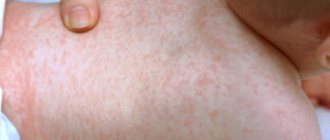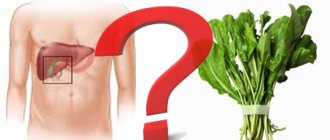What is normal stool for infants?
Dark diarrhea appears in a baby immediately after birth. Original feces in the form of “putty” of a black, brown or greenish hue do not easily lag behind the butt. After feeding with breast milk or formula, the stool becomes heterogeneously liquid and contains whitish inclusions. Breastfed newborns have a sour smell of feces, while formula-fed newborns have a fecal smell.
During the first month of life, the color of stool changes from yellow to brown. After defecation, a wet spot remains on the diapers. Gradually, the stool acquires the consistency of sour cream. The frequency of stool varies from 4 to 8 times a day. In this case, infants do not feel tension during bowel movements.
Black feces in infants and preschoolers
During the lactation period, the color of a child's stool depends on two factors. The first is nutrition. The second depends on the state of the microflora. For the first six months, the baby's diet consists entirely of mother's milk. And his health depends entirely on the quality of his mother's milk. If during breastfeeding a woman eats food or takes dietary supplements with food coloring, all this ends up in the milk. And it will inevitably affect the color of the child’s stool.
Upon reaching the age of 6 months, breastfeeding begins to be supplemented with formulas. And if the new menu begins to include foods containing iron, the body does not immediately get used to it and absorb them well. A sign of this will be black poop. This effect can be achieved by consuming the following products per day:
- bananas;
- apples;
- blackberries;
- blueberries;
- cherries;
- cherries;
- lactose-free yogurt;
- black currant;
- red beets;
- red grapes;
- prunes
All these fruits and berries will cause a reaction in the child’s gastrointestinal tract, not only when eaten fresh. A similar effect is observed if these components are included in juices or compotes. The same list can include dishes with liver and other offal.
If, in addition to changes in stool, the new diet does not bring other inconveniences to the child, you do not need to make significant changes. Over time, the body learns to absorb iron, and the situation stabilizes.
Causes of black diarrhea in a child
Black, loose stools in a child can be caused by the following reasons:
- consumption of coloring foods;
- taking certain medications;
- intestinal infections;
- bleeding from the digestive organs.
In addition, the baby's first stool after birth is also dark in color.
Let us consider in detail the appearance of dark feces in a child in each individual case.
Meconium
This is the name of the first feces of a newborn baby. The intestines excrete original feces for 48 hours. The color of stool varies from marsh-dark to black with a green tint. The resinous substance sticks to diapers and is difficult to wash off.
The mass contains desquamated intestinal epithelial cells, stomach and gall bladder juice. Meconium contains amniotic fluid swallowed during the prenatal period.
Taking medications
For some diseases, children receive medications prescribed by a doctor:
- vitamins containing iron – Multitabs Baby;
- Activated carbon;
- preparations containing iron - Ferrum-Lek syrup, Sorbifer;
- painkillers non-steroidal anti-inflammatory drugs (NSAIDs) - Nurofen, Ibuprofen, etc.
After using charcoal and Sorbifer, black poop appears in the child the next day. This is a completely natural phenomenon. It's a completely different matter when the stool becomes dark after taking NSAIDs. Drugs in this group cause irritation of the stomach walls to such an extent that they can cause bleeding. Blood cells mixed with food cause black, loose stools in children and adults.
A child in this condition needs urgent examination.
Coloring foods
In 1-year-old infants and older children, the stool becomes dark after consuming dark-colored juices and vegetables. Red beets, raw or cooked, turn stool red to black. You shouldn’t think about it if you don’t have abdominal pain. Other foods that cause black diarrhea in a child include:
- pomegranate juice;
- blueberries, currants;
- blood sausage and fresh blood dishes;
- prunes, chokeberry;
- dark grapes.
The black color of feces disappears after removing the product from the menu.
Intestinal infections
In addition to foods, dark, loose stools in a child can be caused by intestinal infections:
- salmonellosis;
- typhoid fever:
- Escherichiosis;
- rotavirus infection.
Diseases caused by pathogenic microorganisms occur with fever, vomiting, and abdominal pain. Feces contain mucus and blood.
Black stools are not typical for dysbacteriosis.
Escherichiosis
An acute infectious disease caused by various pathogenic strains of Escherichia coli.
When infected with a hemorrhagic species of E. coli, a child develops cramping pain in the lower abdomen and vomiting against a background of low-grade fever. Bloody feces 4-5 times a day. A week later, hemolytic anemia develops with signs of intoxication. Acute renal failure soon follows. Escherichiosis in a child, if left untreated, is complicated by brain damage with paresis and seizures. Mortality rate is 3–7% in young children.
Salmonellosis
The infection often occurs in infants in the summer. Salmonella pathogens are transmitted through eggs, chicken, quail, and turkey meat.
Important! Infected products do not change their appearance, smell or color.
When infected, children experience vomiting and diarrhea with clots of mucus and blood within 3–4 hours. The temperature rises to 40 ° C. Intestinal colic causes abdominal pain. Greenish stools have a foul odor.
Salmonellosis occurs with severe intoxication. Dehydration occurs quickly. A child with signs of nausea, vomiting and diarrhea should be taken to the infectious diseases department as quickly as possible.
Typhoid fever
This dangerous disease is caused by bacteria from the genus Salmonella. Infection occurs through fly-infected food, as well as household items used by a sick person. Bacteria from the intestines are carried with the blood throughout the body, causing intoxication.
Characterized by a violent onset in the form of enteritis. Repeated vomiting and loose, profuse green stools appear 10–15 times a day. A rash sometimes occurs on the front surface of the abdomen. The liver and spleen enlarge. A complication of typhoid fever is ulceration of the intestinal wall. Dark brown diarrhea in a child occurs in case of ulcer bleeding.
Rotavirus infection
The source of the disease - rotavirus - is transmitted through dirty hands, household items, and food. The infection occurs in the form of gastroenteritis. Signs of rotavirus infection are frequent vomiting, nausea, screaming and crying of a child without tears. Pain with rumbling is felt throughout the abdomen.
Important! Liquid, foamy stool with a sharp, sour odor does not contain food or blood. Rapid dehydration leads to loss of consciousness and convulsions.
Causes of the disease
Now let's look at the reasons that lead to the appearance of black diarrhea. Feces can change color under the influence of a number of external factors. These usually include the following:
- Taking activated carbon.
- Use of certain vitamin and mineral complexes.
- Taking iron supplements.
- Long-term treatment with bismuth preparations.
- Eating coloring foods such as prunes, beets, strawberries, cherries, cherries, grapes, raisins, bananas, blackberries or liver.
If the above foods and medications have not been consumed or more than 2 days have passed after taking them, then most likely the appearance of black diarrhea is caused by a certain disease and is pathological in nature. In this case, you should immediately seek medical advice, especially if the child was given acetylsalicylic acid (aspirin) the day before, which can cause gastric bleeding.
All of the above signs indicate that the little patient has serious abnormalities and diseases of the gastrointestinal tract that pose a potential health hazard. Therefore, if at least some symptoms are detected, in addition, with frequently recurring attacks of black diarrhea, it is imperative to show the child to a doctor to undergo the necessary medical examination, establish the exact causes of the phenomenon in question and prescribe treatment.
Diarrhea in infants can also appear as a result of a violation of dietary nutrition by the nursing mother, in case of improper introduction of complementary foods, or as a reaction when switching to artificial nutrition.
One of the main factors leading to the appearance of black diarrhea is internal bleeding from the organs of the digestive system. According to statistics, this reason is relevant in more than 50% of cases of black diarrhea. In this case, a change in the color of stool occurs under the influence of certain enzymes to which the blood is exposed when entering the gastric or intestinal cavity.
If the change in the color and consistency of feces is caused by natural processes in the body, then the baby feels good, eats normally, sleeps, and maintains his usual activity. In this case, the condition returns to normal within a few days. The appearance of black diarrhea may indicate the presence of the following pathologies:
- Internal bleeding in the gastrointestinal tract.
- Ulcerative lesion of the stomach.
- Severe injuries to the abdominal area.
- Foreign bodies entering the gastrointestinal tract. This is often observed in children who may swallow various small objects while playing.
- Ingestion of pathogenic intestinal infections into the body (in this case, the stool acquires a specific black-green hue).
- Liver pathologies.
- Gallbladder diseases.
- Duodenal ulcer.
- Duodenitis.
- Esophagitis.
- Varicose veins of the esophagus.
One should take into account the fact that for newborn babies and children under 3 years of age, the periodic appearance of liquid black or green stool is considered a completely normal, natural phenomenon. This often happens when artificial complementary foods are introduced into the baby’s diet, as well as when the baby is fed milk formulas containing iron. Therefore, if this condition is not accompanied by painful symptoms, then do not panic. In a few days everything should return to normal on its own.
First aid for black stool in a child
Constant diarrhea leads to dehydration of the baby. Dehydration is characterized by dry skin, lips, tongue, and severe thirst. No urine is released for 3–6 hours. This condition threatens the child's life. At the first such signs, call an ambulance and take urgent measures:
- The main help of parents is to prevent dangerous dehydration. To do this, you need to give the child 1 tsp of water. every 10–12 minutes. The fastest way to restore the water-salt balance are pharmaceutical powders that are pre-diluted with water - Regidron, Glucosolan. A product of this composition can be easily prepared at home. Dissolve 2 tbsp in 1 liter of bottled or any water. l. sugar and 1 tsp. soda and salt. Pour 1 tsp into the baby's mouth. solution every 10–12 minutes.
- Give enterosorbents - Smecta, Laktofiltrum, Enterosgel. These drugs contain substances that bind toxins that have entered the body.
- If the temperature is elevated, use a rectal suppository with Efferalgan or Paracetamol or give the child a syrup containing these drugs to drink
The child needs to be unsoldered until a team of doctors arrives.
No antidiarrheals should be given to infants. They stop peristalsis and prevent self-cleansing of the intestines.
Harmless reasons for changes in stool color
The color of the stool depends on many reasons:
- foods you have eaten in the last three days;
- amount of bile in stool;
- the speed of its transit through the intestines.
In a healthy person, the color of stool can range from light yellow to dark brown. Sometimes dark brown can be so dark that it appears black, but even this dark color will still be a variant of the norm.
The following foods change the color of stool to black within three days after eating:
- beet;
- prunes;
- red grapes;
- blood sausage;
- hematogen;
- liver;
- beet;
- blueberry;
- red wine with a high content of coloring pigments.
There is nothing wrong with changing the color of stool in this case. After 72 hours, the color of the stool returns to normal.
Taking certain medications can also cause changes in the color of stool.
- Taking iron supplements also causes stool to turn black. These are anti-anemia drugs: Sorbifer, FerrumLek, Aktiferrin, Maltofer, Fenyuls, etc. These also include vitamins with a high iron content. If, after starting to take these medications, your stools change color to black, you should not stop taking them. This is a harmless and safe phenomenon that is not considered a contraindication for continuing to take the drug.
- Activated black carbon has a similar effect.
- Medicines containing bismuth: De-nol and Bismofalk have a similar effect on stool. However, since bismuth-containing drugs are prescribed for stomach ulcers, you should carefully monitor the stool so as not to confuse the black color caused by taking the drugs with bleeding.
The cause of black stool may be ingestion of blood due to severe nosebleeds.
Treatment of black diarrhea in a child
Infections in infants are treated in the infectious diseases department. Complex therapy consists of drugs with different effects:
- in case of dehydration, solutions of Laktosol, Chlosol, Kvartasol are infused intravenously by drip;
- antibacterial drugs - Tsiprolet, Tsiprobay - are prescribed individually, depending on the test results;
- after a course of antibiotics, eubiotics are used to normalize the intestinal microflora - Bifidumbacterin, Hilak Forte, Probifor.
When treating mild forms of intestinal infections at home, the following drugs are used:
- to restore the water-salt balance - Regidron, Tsitroglucosolan, Glucosolan;
- enzymes that facilitate the digestion of food - Mezim Forte, Panzinorm Forte, Festal;
- for 3-5 days, give enterosorbents - Smecta, Polyphepan, Polysorb, Enterosgel.
For any form of the disease, the main treatment is to prevent dehydration. If you don’t have Regidron pharmaceutical powder at home, prepare a solution of salt, soda and sugar yourself.
Traditional methods for black diarrhea
If a child's black stool is associated with eating food that stains, no measures need to be taken. If blood in the stool is suspected, medical attention is required. If it is not possible to see a doctor, traditional methods to stop bleeding are temporarily suitable:
- It’s easy to prepare a solution from 1 tbsp. chamomile poured with a glass of boiling water. After 20 minutes of infusion in a water bath, the solution is filtered and the patient is given 1 tsp to drink. three times a day.
- Pour a glass of boiling water over crushed oak bark. Insist 1 tbsp. l. in a water bath for 20 minutes, then remove from heat and leave for 45 minutes. The finished decoction is applied orally, 1 tsp. 4–5 times a day.
Important! Medicinal plants are used to assist in basic therapy. When you try to cure diarrhea only with herbs, the infection takes a chronic form.
What does the appearance of black diarrhea indicate?
First, you need to understand the main reasons that cause the development of diarrhea in children. They are extremely numerous and varied. Pediatricians consider the following factors to be the most common reasons contributing to the development of this phenomenon:
- Diseases of the digestive system of a chronic nature.
- Intestinal dysbiosis.
- Failure to comply with sanitary standards.
- Long-term treatment with antibiotics.
- Individual intolerance to certain foods and medications.
- Food poisoning.
- Intoxication.
- Acute intestinal infections.
- Eating low-quality foods.
- Frequent cases of overeating.
- Enzymopathy.
- Leukemia.
- Congenital pathologies of the gastrointestinal tract.
- Inflammatory processes occurring in the small or large intestine.
- The presence of enterocolitis.
- Damage from food poisoning.
- Severe stress and psycho-emotional shocks.
- Impaired absorption of food.
- Drinking unboiled water.
- Irritation of the gastrointestinal tract.
Prevention
The appearance of dark feces in a child is prevented by following simple measures:
- washing hands after visiting the toilet, walking;
- use of bottled drinking water;
- control of the shelf life of finished dairy and meat products.
If there are pets in the house, check the household for intestinal and parasitic infections.
In a home where an infant lives, parents should be prepared for disorders of the baby's digestive system. The main drugs in a home first aid kit should be Regidron to restore fluids and Smecta to absorb bacteria and toxins.
Komarovsky about loose stools in children
Dr. Komarovsky recommends that if a child has loose, unstable stools, follow a diet, fight dehydration, use antibiotics only as prescribed by a doctor - these drugs are really necessary only if diarrhea lasts more than three days, there are blood impurities in the stool and vomit, a specialist has diagnosed severe form of cholera, salmonellosis.
Diarrhea is often associated with dysbacteriosis, but this disease is treated only in the countries of the post-Soviet space; there is no such disease in the ICD. More than 400 different bacteria live in the intestines, the ratio of which is individual for each person. An imbalance is not an independent pathology, but a consequence of poisoning, malnutrition, temperature; after eliminating the provoking factor, the balance will be restored without additional drug treatment.
Evgeniy Olegovich recommends that after intestinal infections, switch the child to a vegetarian diet for 5-7 days, introducing dairy and meat products gradually - this will help avoid enzyme deficiency, which often occurs after the symptoms of the disease have eliminated.
Normally, stool in children should have a semi-liquid, mushy consistency; bowel movements occur 2–4 times daily. Loose stools in children are common, but are not always a sign of diarrhea. The reasons for frequent bowel movements can be different; the presence of the disease is indicated by additional characteristic symptoms - temperature, strong odor and change in color of stool, deterioration of appetite and the psycho-emotional state of the child.
Diseases of the stomach and intestines
lechusdoma.ru
Встречи строго индивидуально, реальные путаны Оренбург по вызову, отдых для уважающих себя мужчин -dosugorenburg.ru. После десятка лет совместной жизни, когда между партнёрами больше привычка, чем любовь, проститутка поможет оживить сексуальные отношения и разжечь былой огонь страсти в супругах, научив новым сексуальным штукам. Кончить при желании вы сможете прямо на лицо проститутке или на ее грудь. Сексапильные реальные путаны Оренбург по вызову, сочные и сладкие, они такие интересные и чуткие, что любой захочет их. Выбери девушку сейчас.











